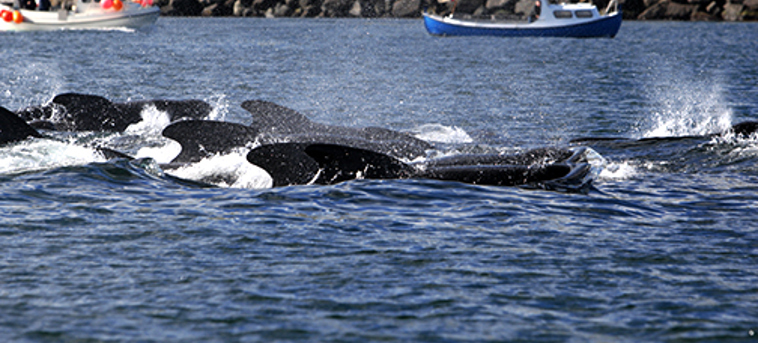
Scientific research
Faroese scientists regularly track the migration patterns of pilot whales and take part in international surveys to estimate the distribution and the size of the pilot whale population.
To ensure that whaling today continues to be sustainable on-going research into the size of the pilot whale population and its distribution is vital.
The Faroese Natural History Museum is responsible for whale research in the Faroes, and its experts work through international organisations such as NAMMCO with scientists in other countries to undertake such research.
NAMMCO is an international body that is responsible for monitoring whales in the North Atlantic so that the conservation and management of whales in the region is based on the best available scientific advice.
The largest whale sighting survey so far was the TNASS survey in 2007, in which the Faroes also participated. In such surveys, whales are observed from both ships and aircraft. The survey calculated the pilot whale population to be 380,000 whales.
In order to gain a better understanding of how and where pilot whales migrate, satellite transmitters are attached to whales, which are released back into the ocean and their movements are tracked.
The Faroese Natural History Museum has been responsible for this work in the Faroes and has attached transmitters to pilot whales in 2000, 2004, 2011 and 2012.
SUSTAINABLE
COMMUNAL
FOOD
NATURAL


